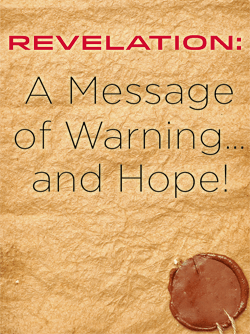The Economics of Christmas
Many observers lament the "commercialization" of Christmas. What exactly is the real "reason for the season"? Can we put Christ into Christmas? Was He ever there?
“Christmas creep.” That is the term that retailers use to describe the phenomenon of the Christmas retailing season, seemingly starting earlier and earlier each year. Many of us can remember when holiday decorations in the stores appeared only in December. Then the selling season began encroaching into November, and the Christmas music in the stores began around the Thanksgiving holiday in the United States. Then it moved to the week before Thanksgiving. Now we commonly see decorations and hear seasonal music in the mall around Halloween in October. This year, a few U.S. stores even brought out their first Christmas displays right after Labor Day—the first Monday in September! Will Rudolph the Red-Nosed Reindeer soon be competing with the Easter Bunny for consumers’ cash?
Would you like to know “the reason for the season” as far as the secular promotion of the Christmas holidays goes? Just “follow the money”!
“Black Friday” is the name retailers give to the day after Thanksgiving in the U.S. and the U.K.—or “Vendredi Noir” in France—all of which occur around the end of November. It refers to the time when retailers traditionally consider that their cash flow goes from a loss—“running red ink” during most of the year—to a profit when they say they are “in the black.” This means that most of their profits come from sales in the holiday season—no Christmas, no profits. The Christmas holidays are critical to the retailing economy. Naturally, they would want to extend the buying season as long as possible. There is great financial incentive to maximize retailing activity during that period.
Make It or Break It
Christmas can be “make or break” for retailers. Each year they have to find ways to maintain or increase their sales volume during the holidays. Creative marketers find numerous ways to create a longer selling season, because it means that more of consumers’ hard-earned cash is available to buy their products. If customers are not saving during the year for Christmas purchases—which is the case for most people—they will likely have to finance their purchases with either existing wages or credit card debt. So having a three or four month selling season brings in more sales than marketing in December only—hence, we see what retailers call “Christmas Creep.” The holiday marketing season “creeps” into November, October or earlier if merchants can get away with it.
One of the most important marketing tactics is to generate “Christmas spirit” in the stores and shopping districts. Initially, holiday decorations remind shoppers of the season and add to a festive feeling of involvement in it. Soon there is seasonal music—usually of a secular sort to avoid offending the non-religious—and it is a very important element in convincing shoppers to buy more and more. Crooners, some of whom are long gone, sing sentimental renditions of “Santa Claus is Coming to Town” or “Rudolph the Red-Nosed Reindeer.” After the selling season is over in January, most people are very relieved to escape the constant musical marketing.
Many employers give bonuses at year-end, and the retailers want to capture as much of those bonuses as possible. So, many merchants have big year-end sales to clear out remaining merchandise and to capture those bonuses.
Guilt sells. Parents are made to feel that they are not good parents if their kids don’t have “a big Christmas.” How often have you been asked, “Did you have a big Christmas this year?” A lot of sentimentality is attached to having a lot of presents that you sacrificed financially to purchase, and the main beneficiary of that sentiment may be the merchant who sold the gifts—rather than the recipient. Over-extending financially on Christmas for emotional reasons is a common problem—as credit repair agencies know.
Credit Card Debt—The Ghost of Christmas Past
What’s in the cards? Credit card debt spikes during the holidays—and then must be paid off during the rest of the year at very high interest rates. Personal finance experts call this accumulation of expensive debt the “Holiday Debt Hangover.” Credit repair firms love it!
“Consumer counseling agencies see a 25 percent increase in the number of people seeking help in January and February, and most of that traffic is propelled to their doors by holiday bills that haunt consumers like the ghost of Christmas past… ‘A lot of people get by, paying the minimums on their credit cards,’ said Durant Abernethy, president of the National Foundation for Credit Counseling. ‘Add on the holiday bills and all of a sudden, those minimums are more than they can afford’” (Eileen Alt Powell, “Lingering Christmas Bills Can Lead to Debt Woes.” ABCNews.go.com. March 7, 2014).
Just consider that with a typical 17 percent credit card interest rate, a consumer will pile up $170 in interest for every $1,000 of credit card balances carried for a year. Someone maintaining a $5,000 debt balance for a year will pay $850 in interest costs annually. And some rates are considerably higher. But making minimum payments to pay off credit card debt can be extraordinarily expensive. At a 2.5 percent minimum monthly payment that many cards charge ($120 on $5,000), it will take someone 21 years and 2 months to pay off that $5,000 balance. The debtor will wind up paying $6,045.45 in interest alone—in addition to the original balance! Credit card companies love the holiday season and the “Holiday Debt Hangover” it produces. It is extremely lucrative for them and extremely expensive for unwise holiday shoppers.
There is plenty of sane advice on dealing with the problems that the holiday season creates. Deborah Fowles advises on about.com, “How to Avoid the Financial Holiday Hangover: Does this scenario sound familiar? You use credit cards to do your holiday shopping, promising yourself you’ll pay the debt off within two or three months. Six or eight months later (or more), you’re still paying, and those items that seemed like such bargains end up costing you 10 to 20 percent more than you thought, due to credit card interest. For many Americans, this debt pattern is repeated year after year. Personal finance experts call this the ‘holiday hangover.’ There are times when incurring credit card debt makes sense, but holiday gift-buying is not one of them. Using credit cards often leads to impulse spending, overspending, and increased debt (“Avoid Credit Card Debt During the Holidays”).
If the gift-buying of the holiday season is an economic boon to retailers and credit card companies, the months after the holidays are a veritable gold mine for credit repair firms. Credit repair firms do much of their business as a result of holiday credit card purchases.
The Holiday Season Started Earlier Than Most Think
The custom of gift-giving during the winter festival goes back to Roman times and earlier, and the pagan origins of Christmas are well-known. Almost all sun-worshipping cultures had an important festival around the end of December to celebrate the winter solstice and the beginning of the slow increase of the sun’s arc in the sky. In agrarian societies, this was the promise of springtime to come and was usually associated with the “rebirth” of the sun-god of that culture. As one popular encyclopedia describes: “The celebrations of Saturnalia included the making and giving of small presents (saturnalia et sigillaricia). This holiday was observed over a series of days beginning on December 17 (the birthday of Saturn), and ending on December 25 (the birthday of Sol Invictus, the “Unconquered Sun”). The combined festivals resulted in an extended winter holiday season… The feast of Sol Invictus on December 25 was a sacred day in the religion of Mithraism, which was widespread in the Roman Empire. Its god, Mithras, was a solar deity of Persian origin, identified with the Sun. It displayed its unconquerability as ‘Sol Invictus’ when it began to rise higher in the sky following the Winter Solstice—hence December 25 was celebrated as the Sun’s birthday. In 274ce, Emperor Aurelian officially designated December 25 as the festival of Sol Invictus” (“Christmas,” New World Encyclopedia).
As a matter of history, the observance of December 25 began as the birthday of the sun-god, not the Son of God! There is no biblical or other historical evidence that Jesus was born on that day.
These celebrations were very popular, so after the Roman Empire professed Christianity under Constantine, the existing pagan festival was adapted to a new theology, helping create popular support for Constantine’s regime. The winter festival has developed a lot over the centuries, but many elements remain the same, particularly partying, gift-giving and decorating with evergreens.
Can Mankind “Sanctify the Pagan?”
Religious historians know that Christmas had its origin in paganism, but theologians have long reasoned that it is possible to “sanctify the pagan.” In this view, a culture may keep its pre-Christian forms, but the pagan symbols and myths can become Christian in meaning and purpose. The influential Catholic leader, Cardinal Newman, wrote, “We are told in various ways by Eusebius [an early church historian], that Constantine, in order to recommend the new religion to the heathen, transferred into it the outward ornaments to which they had been accustomed in their own…. The use of temples, and these dedicated to particular saints… holidays and seasons… turning to the East, images at a later date… are all of pagan origin, and sanctified by their adoption in the Church” (“An Essay on the Development of Christian Doctrine.” Chapter 8:6).
The theologian, Christopher Dawson, went even further when he wrote, “The complete sanctification of the pagan is the end result of the Christianization of the world” (“The Leavening Process in Christian Culture,” August 7, 1955). So in this view, the conversion of the world to Christianity necessarily involves accepting its pagan practices. But which would adopt which? Would paganism be adopting Christianity or would Christianity be adopting paganism?
So the fact is well-known among secular and religious historians that many of the symbols of Christmas and the time of its observance came from pagan practices. What is questionable is the doctrine of “sanctifying the pagan” that is used to justify many practices in Christendom. While this rationale can be attractive for theologians and traditionalists, it is contradicted by the Bible.
God said: “When the Lord your God cuts off from before you the nations which you go to dispossess, and you displace them and dwell in their land, take heed to yourself that you are not ensnared to follow them, after they are destroyed from before you, and that you do not inquire after their gods, saying, ‘How did these nations serve their gods? I also will do likewise.’ You shall not worship the Lord your God in that way; for every abomination to the Lord which He hates they have done to their gods; for they burn even their sons and daughters in the fire to their gods. Whatever I command you, be careful to observe it; you shall not add to it nor take away from it” (Deuteronomy 12:29–32).
God has not changed His mind about this. He has told us, “For I am the Lord, I do not change” (Malachi 3:6), and “Jesus Christ is the same yesterday, today, and forever” (Hebrews 13:8). God rejects pagan practices and instructs us not to incorporate them into His worship. He tells us what days we are to observe, how we are to observe them, and why we are to observe them. There was no instruction by Christ or the apostles to have an annual memorial to Christ’s birth or to copy the pagans in their festivals—quite the contrary, copying the pagans in God’s worship was forbidden. You cannot “sanctify the pagan.”
Many Are Opting Out
Should Christmas be a religious celebration for you? The origins of Christmas are well known and are not particularly controversial. It is a traditional holiday that originated in paganism and was incorporated into professing Christianity in the fourth and fifth centuries ad. It is not a biblical feast and was never practiced by the first century Church. Jesus Christ never authorized a memorial to His birth; rather, He instructed His faithful followers to keep a memorial to His death (Luke 22:19; 1 Corinthians 11:23–26). And the Bible forbids adopting pagan customs in the worship of the true God—the God of Abraham, Isaac and Jacob. So Christmas is not an appropriate celebration for one who professes Christ!
Furthermore, the secular aspects of the Christmas holidays—the costs and hassle that dominate the season—are difficulties many would rather avoid. The seasonal celebrations often involve excessive drinking, and the number of traffic accidents increases dramatically during the holidays. Everyone should be very careful on the highways, particularly at night. The marketing of Christmas dominates the season. Shopping can be very stressful, since stores are packed with shoppers trying to finish their shopping for long lists of gift-recipients. And the debts that mount up during the season often stay with shoppers for much of the following year. So, more and more people are opting out of the secular festivities—to their great relief.
God Offers a Better Way
As a matter of history, the first-century Church of God kept the Christian Passover and the seven annual Holy Days as commanded in Leviticus 23. In doing that, they were not trying to “be Jewish”—they were simply obeying God. These days picture the plan of salvation. By commanding their observance, God, in effect, has us act out this great plan by participating in His annual Feasts. The Apostle Jude exhorted the first-century Church—and us today, “Beloved, while I was very diligent to write to you concerning our common salvation, I found it necessary to write to you exhorting you to contend earnestly for the faith which was once for all delivered to the saints” (Jude 3). Both biblically and historically, “the faith once delivered for all” included the annual biblical festivals. The real choice today is whether to follow the instructions of Christ and the apostles—as recorded in the Bible—or to continue with the familiar traditions that replaced those instructions.






